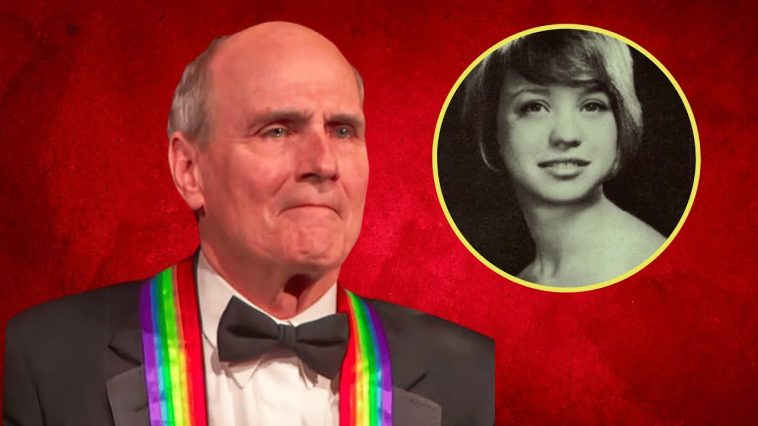James Taylor, the renowned American singer-songwriter celebrated for his timeless melodies. The emotive lyrics and also for the deeply personal and often tumultuous journey that has marked his life. Taylor’s music resonates with audiences around the world his struggles with addiction have been a defining aspect of his story. In a surprising twist, Taylor encloses one of his most iconic songs from a surprising location, offering a poignant glimpse into the raw and candid nature of his artistry and his unflinching honesty in confronting personal demons. In this video, we reveal the details of that song, as well as Taylor’s struggles throughout his extraordinary life. Join Facts Verse, as we present: The Tragic Real Story Behind James Taylor’s Biggest Hit Song
Life And Career
James Taylor’s life and career are the transformative power of music and the resilience of the human spirit. Born on March 12, 1948, in Boston, Massachusetts, Taylor come from a good background, but his early life impairs by personal struggles. Despite growing up in a well-off family, he grappled with addiction from an early age. His experimentation with drugs during his teenage years escalated when he entered the music scene in the 1960s, exacerbating his battles with substance abuse and depression.
One of the most surprising and poignant moments in James Taylor’s career occurred during his stay in a psychiatric hospital in 1968. Struggling with addiction and emotional turmoil, Taylor wrote one of his most iconic songs, “Fire and Rain,” within the confines of the hospital. This introspective masterpiece would go on to become a defining anthem of his career, encapsulating the pain of personal loss, struggles with addiction, and the hope for healing. Despite his early challenges, James Taylor’s music would ultimately become a source of solace and redemption.
He moved to New York City to pursue a music career in the late 1960s, and by the early 1970s, he had achieved international acclaim. His distinctive blend of folk, rock, and pop, characterized by his soulful voice and evocative lyrics, resonated deeply with audiences.
Remarkable Heights
Over the years, Taylor’s career reached remarkable heights. He earned multiple Grammy Awards, including Album of the Year for his 1970 masterpiece “Sweet Baby James.” His catalog of timeless hits, including “You’ve Got a Friend,” “Carolina in My Mind,” and “Fire and Rain,” established him as one of the most influential singer-songwriters of his generation. James Taylor’s enduring legacy extends beyond his musical accomplishments. His public acknowledgment of his struggles with addiction and his journey to sobriety have inspired countless individuals facing similar challenges.
Through the power of his music and the candid sharing of his life’s ups and downs, James Taylor’s story serves as a beacon of hope and resilience, showcasing how art can emerge from even the darkest of personal struggles and transform lives in the process. In this video, we reveal the details of that song, as well as Taylor’s struggles throughout his extraordinary life. Join Facts Verse, as we present: The Tragic Real Story Behind James Taylor’s Biggest Hit Song
Fire and Rain
“Fire and Rain” is one of James Taylor’s most iconic and enduring songs, released as the second single from his 1970 album “Sweet Baby James.” The song is not only celebrated for its beautiful melody and Taylor’s distinctive vocal style but also for its deeply personal and introspective lyrics. It has become a classic in the singer-songwriter genre and is often considered one of the greatest songs of all time. The song touches upon themes of loss, love, despair, and self-reflection.
James Taylor wrote “Fire and Rain” during a turbulent period in his life, and this context adds depth and poignancy to the song’s meaning. In terms of its lyrics, “Fire and Rain” can be broken down into several key themes: Loss and Grief: The song opens with the line “Just yesterday morning, they let me know you were gone.” This immediately sets the tone of the song as one of loss and grief. Taylor is grappling with the death of a close friend or loved one, and the emotions associated with that loss are palpable throughout the song.
Struggles and Despair: The lyrics also touch upon Taylor’s personal struggles, as he sings about times when he “can’t find a friend” and how he’s “seen lonely times.” This hints at his own battles with depression and addiction. Longing and Regret: The chorus of the song contains the lines, “I’ve seen fire, and I’ve seen rain / I’ve seen sunny days that I thought would never end.” These lines reflect a sense of longing and regret, as Taylor looks back on both the good and bad times in his life.The story behind the song’s creation adds another layer of depth to its meaning.
Psychiatric Hospital In 1968
James Taylor checked himself into a psychiatric hospital in 1968 to deal with his struggles with depression and addiction. It was during his stay in rehab that he wrote “Fire and Rain.” The song became a way for him to process his emotions and experiences during that challenging period of his life. The “fire” in the song is often interpreted as a reference to the intense emotional pain he was going through, while the “rain” represents the cleansing and healing process he was undergoing in rehab. In interviews, James Taylor has spoken about the song’s autobiographical nature and its connection to his personal experiences. He has mentioned that the first verse is about the suicide of his childhood friend, Suzanne Schnerr, while the second verse deals with his struggles with addiction and the emotional toll it took on him.
In a 1972 interview with Rolling Stone magazine, Taylor discussed the song and its genesis, saying, “Fire and Rain” has three verses. The first verse is about my reactions to the death of a friend.” Taylor explained that the second verse was about having the monkey on his back of addiction. He said that the line “won’t you look down upon me, Jesus” was “an expression of my desperation in trying to get through the time when my body was aching and the time was at hand when I had to do it.” Said James of the third verse, it “refers to my recuperation [beating the heroin addiction] in Austen Riggs which lasted about five months.” And the “Flying Machine in pieces on the ground” is not a plane crash, as many people have always assumed. It is a refence to the end of his band, “The Flying Machine.”
Early Life
James Taylor’s early life was marked by both privilege and hardship, and these experiences would later influence his music and career. James Taylor was born on March 12, 1948, in Boston, Massachusetts, into a well-off and well-educated family. His father, Isaac M. Taylor, was a physician, and his mother, Gertrude Woodard Taylor, was an aspiring opera singer. The Taylor family lived in a comfortable suburban setting in Chapel Hill, North Carolina, for most of James’s childhood. From a very young age, James Taylor showed a strong interest in music. He began singing and playing the cello at an early age. His family recognized his talent and encouraged his musical pursuits. His father, in particular, played a significant role in fostering James’s early musical education.
Despite their privileged background, the Taylor family faced internal struggles, which would have a lasting impact on James’s life. One of the most significant challenges was his father’s battle with alcoholism. Isaac Taylor’s drinking problem caused turmoil within the family, leading to a strained and tumultuous household.
Substance Abuse And Depression
The tension and instability caused by his father’s addiction had a profound effect on James and his siblings. It contributed to James’s own struggles with substance abuse and depression later in life, which he candidly addressed in his music, particularly in songs like “Fire and Rain.” James Taylor’s interest in music continued to grow, and he began performing in local bands during his teenage years. He was sent to various boarding schools and even a psychiatric hospital during his adolescence due to his struggles with depression and addiction. However, he persisted in pursuing his musical passion.
In 1966, at the age of 18, James Taylor moved to New York City to pursue a career in music. He signed with the Apple Records label and released his eponymous debut album in 1968, but it received limited success. It was during this period that his struggles with substance abuse escalated, leading to his eventual stay in a psychiatric hospital and the writing of his iconic song, “Fire and Rain.” James Taylor’s early life, marked by both privilege and personal challenges, played a pivotal role in shaping his music and the deeply personal and introspective style for which he became known. His ability to channel his experiences and emotions into his songs resonated with audiences and contributed to his enduring success as a singer-songwriter.
Struggles With Addiction
James Taylor’s life has been marked by a well-documented struggle with addiction, particularly with drugs and alcohol. His battles with substance abuse have had a significant impact on his personal life and his career as a musician. Here is a detailed overview of James Taylor’s struggles with addiction over the course of his life. James Taylor’s exposure to drugs began at an early age, as he experimented with substances during his teenage years. His struggles with addiction intensified during his late teens and early twenties when he moved to New York City to pursue a music career. The music scene of the 1960s and 1970s was notorious for its drug culture, and Taylor became ensnared in this environment.
Ongoing Substance Abuse
Despite his hospitalization, Taylor’s addiction problems persisted. He continued to abuse drugs and alcohol throughout the early 1970s. His substance abuse had a detrimental effect on his personal life and relationships, including his marriage to Carly Simon, which ended in divorce in 1983.
Turning Point and Recovery
In the mid-1980s, James Taylor reached a turning point in his life. He decided to confront his addiction issues and seek help. Taylor checked himself into a rehab center and began the process of recovery. He made a commitment to sobriety and started attending Alcoholics Anonymous (AA) meetings.
Sobriety and Career Resurgence
Taylor’s journey to recovery marked a significant turning point in his life. He embraced a sober lifestyle and began rebuilding his personal life and career. His music during this period reflected his newfound clarity and sobriety. Albums like “That’s Why I’m Here” (1985) and “Never Die Young” (1988) featured songs that touched on themes of recovery and personal growth.
Advocacy and Inspiration
James Taylor has been open about his struggles with addiction and has used his platform to raise awareness about the challenges of substance abuse. He has been an advocate for addiction recovery and has encouraged others to seek help and support. James Taylor’s journey through addiction and recovery is a testament to the strength of the human spirit and the power of rehabilitation. His experiences have not only influenced his music but have also inspired others facing similar challenges to seek help and embrace sobriety. Taylor’s story serves as a reminder that recovery is possible, even in the face of profound struggles.
Musical Legacy
James Taylor’s musical career has been marked by numerous remarkable accomplishments. Among his most significant achievements are his multiple Grammy Awards, including the prestigious Grammy Award for Album of the Year in 1971 for his album “Album of the Year,” which included his iconic song “Fire and Rain.” Taylor’s signature blend of folk, rock, and pop music has resonated with audiences for decades, earning him a devoted fan base and critical acclaim. His induction into both the Rock and Roll Hall of Fame and the Songwriters Hall of Fame further solidify his status as a musical legend. With over 100 million records sold worldwide and timeless hits such as “You’ve Got a Friend,” “Carolina in My Mind,” and “Sweet Baby James,” James Taylor’s enduring influence and contributions to the world of music continue to be celebrated and cherished by generations of listeners.
Now it’s time to hear from you. Were you surprised at where James wrote “Fire and Rain”? Let us know in the comments section below!



